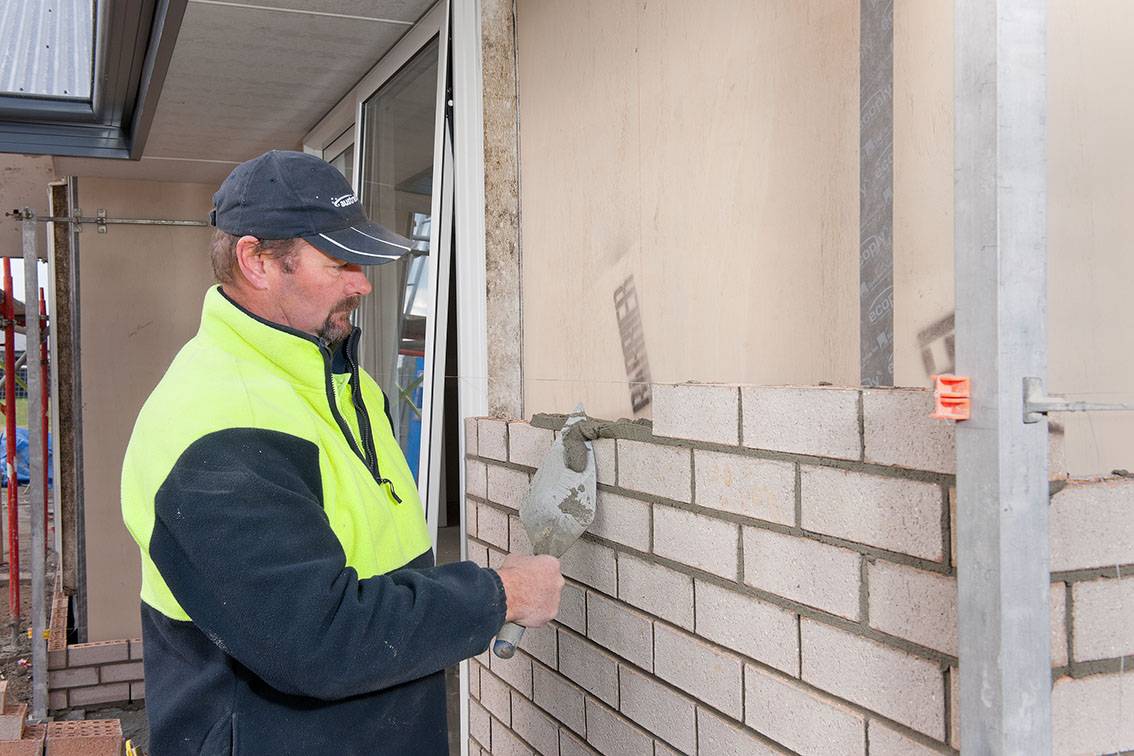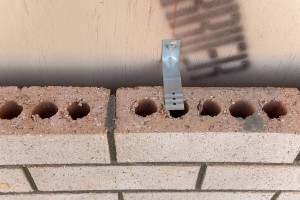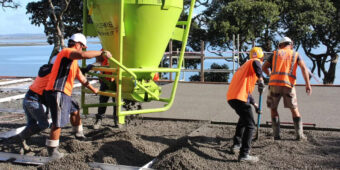BBFNZ encourages better bricklaying
24 Feb 2015, Featured, LBP & Regulation, Prove Your Know How

Is your brickwork up to scratch? Following a number of failed brick inspection reports, the Brick and Blocklayers Federation (BBFNZ) is looking to raise industry standards through the publication of a best practice guide
BBFNZ believes the residential bricklaying industry could improve its standards and avoid disputes, if bricklayers take more care in a few key areas.
Having reviewed a number of failed brick inspection reports, BBFNZ urges all bricklayers to:
- Ensure they thoroughly read all consent documents before starting.
- Check that the substrate has been prepared correctly and, if it hasn’t, don’t start work.
- Make sure the cavity is adequate and clear.
“One of the key messages being given to the residential construction industry is to ‘build it right the first time’; however, easily avoidable mistakes are being made,” says BBFNZ CEO Melanie McIver. “These can add unnecessary stress to a build because they sometimes result in expensive and time-consuming remediation work.”
Mistakes to avoid
Ms McIver says initial observations of the data received show that this remediation work could range from something as simple as having the builder install a Window Association of New Zealand (WANZ) bar, to having to pull down the brickwork and re-clad.
In one example, an amendment was obtained to vary the brick veneer, but because it wasn’t read by the bricklayer, the wrong product was laid.
“When guys don’t read and follow the plan, they are forgetting that non-compliance with building consents is actually an offence under the Building Act,” she says. “It can lead to fines and disciplinary action by the Building Practitioners Board, as well as civil action.
“All it takes is being familiar with the consent documentation and, if necessary, appropriate standards before jumping into the work. Again, if the substrate isn’t right – don’t start work!”
Bricklayers aren’t responsible for sealing penetrations, but they are accountable for checking the substrate before they start working. They may also be held liable if they have covered up faulty building work. It’s worth getting the main contractor to sort any substrate issue before you start.
“Knowledge is knowing the components to make mortar, wisdom is knowing when they are properly mixed together
Bricklayers are also reminded that, unless the consenting documents state otherwise, cavity widths should be between 40–75mm and clear of mortar. While not mandatory, ‘washouts’ are good trade practice.
A ‘washout’ involves laying every corner, and every subsequent brick, at 800mm centres on a bed of sand. Once the veneer reaches 800mm high, these bricks are removed to facilitate the regular washing out of the mortar at the base of the cavity. Mortar should not encroach more than 5mm into the cavity.
Best practice guide
BBFNZ is in the process of publishing a Best Practice Guide for Brick Veneer to assist the trade, by setting clear, acceptable work practices. It’s expected that the guide will also help set clear expectations of workmanship quality for the industry.
BBFNZ will be working with its local associations to help ensure members’ practices are compliant and to help them with any standards the federation may set for the industry.
“What we’re trying to build for our members is trade wisdom, rather than just trade knowledge,” says Ms McIver. “Knowledge is knowing the components to make mortar; wisdom is knowing when they are properly mixed together.”
Brick and blocklayers, and those who contract them, are urged to familiarise themselves with the new federation website: www.bbfnz.co.nz
BBFNZ also recommends building companies that regularly engage bricklayers to develop a relationship with their local association and that they make using federation-aligned brick and blocklayers standard practice.
Register to earn LBP Points Sign in




